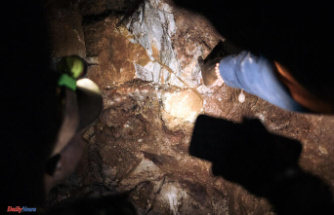The drought that affects the west of the United States is no longer. On Monday the Federal Government declared for the first time shortage of water at the main source of supply of the region, Lake Mead, a reserve of which Arizona, Nevada, California and some parts of Mexico depend. The flow of the Colorado River is at historically low levels, shaken by a combination of high temperatures and shortage of rains that will force the first supply cuts in the region.
The effects of climate change are more and more obvious and worrying. The forecasts aim that the country's largest reservoir will end the year to 34% of its capacity, a new minimum. He is currently at his lowest level since he was created in the 30s, located a few kilometers from Las Vegas and after the opening of the famous Hoover prey.
The declaration of drought in the Colorado River will affect the farmers of Arizona at the moment. At the beginning of the year you will see its drastically reduced quota - in 20%, approximately, a few cuts that will affect Nevada and to parts of Northern Mexico. The expert forecasts, however, indicate that there will be greater future cuts in the supply for the 40 million people who depend in part on the Colorado as a source of supply.
"Today's announcement highlights the challenges we face in the Colorado River Basin and in other parts of the West," said Tanya Trujillo, Deputy Secretary of Interior for the Department of Water and Science.
Seven states receive the water supply from the Colorado River: California, Nevada, Arizona, New Mexico, Utah, Colorado and Wyoming. All of them have participated in the negotiation of the cuts, which will involve a change in the type of harvests in the agricultural sector and in the use of underground aquifers to compensate for the scarcity, an increasingly limited resource in this part of the country.
Meanwhile, several fires remain assets in the west of the country, in a devastating summer so far. The two largest, the Dixie and the McFarland in California are still far from being controlled. In addition, the shell, a few kilometers from the capital of the State, Sacramento, has forced 7,000 people to evacuate.
Date Of Update: 04 September 2021, 22:21











